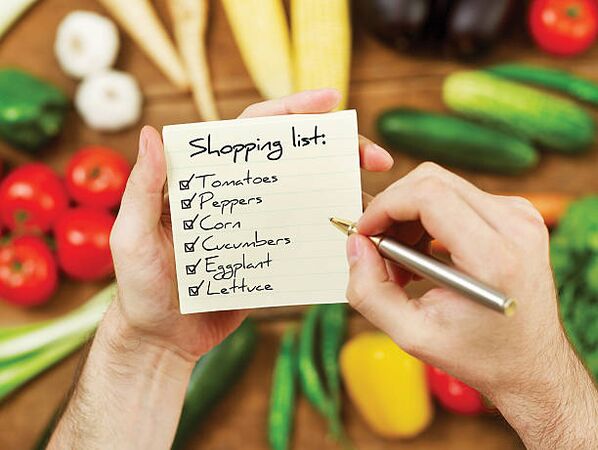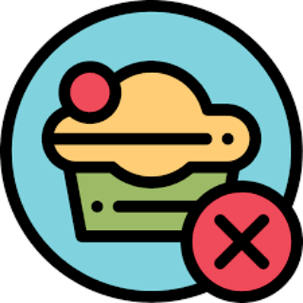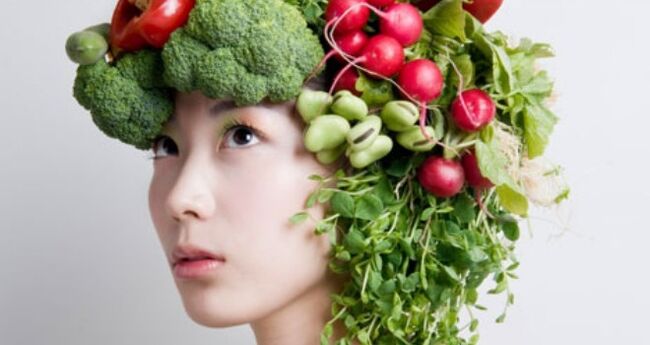Japanese food has gained widespread popularity among people who want to lose weight. Most importantly, they are attracted to the short duration (only 14 days) and the availability of the required products.
How the Japanese diet emerged
Many people think that the diet of the Japanese is related to the daily diet of the people of this country, but this is not the case. Most likely, the diet got this name because of the need for strict adherence to the diet and high efficiency. The Japanese are very obligated and responsible people, they approach any business with full attention and exactly follow the set rules, that is why they get high results.
Another version of that name is where the diet is made. It is believed to have been developed at the Yaeks Japanese clinic. Nutritionist Naomi Moriyama, who developed the weight -loss system, is fully confident in its effectiveness and suitability of the product with the usual diet of Europeans, which tastes different from the Japanese.
The advantages of the Japanese diet

The Japanese diet will help cleanse the body of toxins, as well as regulate metabolism in just 14 days.
A large amount of fruit will fill the body with fiber and help improve intestinal function, and an adequate amount of food will maintain a feeling of fullness and high performance.
Characteristics and principles
Diet, unlike others, does not mean fractional nutrition. It is designed for three meals with no additional snacks. You can not change the day of the diet in places and in any way try to "improve" the diet, otherwise it is no longer Japanese food and should start from scratch.
Every morning you should drink a glass of cold water, this will help speed up metabolism and eliminate hunger. For the rest, it is recommended to drink pure (non -carbonated) minerals or boiled water as much as possible.
Shopping list

To successfully maintain your diet, you should buy the following foods:
- 1 pack of green tea whatever you like. Make sure there are no flavors in the composition.
- 1 packet of good coffee beans (or ground).
- 2 cassettes (20 seeds. ) Chicken eggs.
- 1 kg. chicken fillet (breast).
- 1 kg. beef porridge (better to take lean).
- 2 kg. sea fish fillets.
- 0. 5 l. extra virgin olive oil.
- 2 simple white cabbage.
- 1 kg. zucchini or eggplant.
- 2-3 kg. fresh carrots.
- 1 kg. any fruit other than bananas and grapes.
- 1 l. tomato juice.
- 1 l. kefir.
- 2 lemon seeds.
All provisions must be fresh and the best you can get.
What should not be in the diet

Avoid sugar and salt altogether during the Japanese diet. The same rules apply to all types of baked goods, sweets and alcoholic beverages.
Japanese diet menu by day
The diet of the Japanese is very similar to his diet with the famous chemical diet, which is often used to treat obesity in diabetics. It also uses the effect of reducing the amount of carbohydrates while increasing the portion of protein.
The diet menu is quite strict, no changes are allowed in it.
Day 1
- Breakfast: black coffee without added sugar, sweeteners or milk.
- Lunch: 2 boiled eggs, boiled cabbage, seasoned with vegetable oil, and a glass of tomato juice.
- Dinner: 200 gr. fried or boiled fish.
Day 2
- Breakfast: black coffee with a slice of rye bread.
- Lunch: boiled cabbage seasoned with vegetable oil + 200 gr. fried or boiled fish.
- Dinner: a glass of kefir with 100 gr. boiled beef.
Day 3
- Breakfast: black coffee with a slice of rye bread heated in a toaster (you can replace it with tasteless biscuits).
- Lunch: a large number of zucchini or eggplant fried in vegetable oil.
- Dinner: raw cabbage salad, seasoned with vegetable oil + 200 gr. boiled beef without salt.
Day 4
- Breakfast: fresh medium -sized carrots, chopped on a grater or by other simple means + whole lemon juice.
- Lunch: a glass of tomato juice + 200 gr. boiled or fried fish.
- Dinner: salad of 200 gr. any fruit.
Day 5
- Breakfast: fresh medium -sized carrots, chopped on a grater or by other simple means + whole lemon juice.
- Lunch: a glass of tomato juice + 200 gr. boiled fish.
- Dinner: 200 gr. any fresh fruit.
Day 6
- Breakfast: black coffee without additives.
- Lunch: 500 gr. boiled chicken breast without salt + carrot salad and fresh cabbage, seasoned with oil.
- Dinner: fresh carrots + 2 boiled eggs.
Day 7
- Breakfast: a glass of green tea.
- Lunch: 200 gr. boiled beef without salt.
- Dinner: 200 gr. any fresh fruit, or 200 gr. boiled or fried fish, or 2 boiled eggs + fresh carrots, or a piece of boiled beef with a glass of kefir.
8th day
- Breakfast: black coffee.
- Lunch: 500 gr. boiled chicken breast without salt + raw carrot salad with cabbage, seasoned with vegetable oil.
- Dinner: 2 boiled eggs + fresh carrot salad with vegetable oil.
Day 9
- Breakfast: fresh carrots seasoned with lemon juice.
- Lunch: 200 gr. boiled or fried fish with a glass of tomato juice.
- Dinner: 200 gr. any fresh fruit.
10th day
- Breakfast: black coffee without sugar.
- Lunch: 3 simple carrots dipped in vegetable oil + boiled eggs + 50 gr. cheese.
- Dinner: 200 gr. any fresh fruit.
11th day
- Breakfast: black coffee without additives with a slice of rye bread.
- Lunch: a large number of eggplant or zucchini fried in vegetable oil.
- Dinner: 200 gr. unsalted beef, fresh cabbage salad, seasoned with vegetable oil and 2 boiled eggs.
The 12th day
- Breakfast: black coffee.
- Lunch: 200 gr. boiled or fried fish with fresh cabbage salad, seasoned with vegetable oil.
- Dinner: a glass of kefir + 100 gr. boiled beef without salt.
Day 13
- Breakfast: black coffee without additives.
- Lunch: boiled cabbage, seasoned with vegetable oil + a glass of tomato juice + 2 boiled eggs.
- Dinner: 200 gr. beef boiled or fried in vegetable oil.
Day 14
- Breakfast: black coffee without additives.
- Lunch: 200 gr. boiled or fried fish, fresh cabbage salad, seasoned with olive oil.
- Dinner: 200 gr. boiled beef without salt + a glass of kefir.
How to stay on a diet

In order not to ruin your diet at the most inopportune moment, try to follow his recommendations:
- schedule it for months where there are no big vacations and trips;
- always remember the motivations that make you lose weight;
- find yourself as a hobby;
- arguing with a loved one that you will never break up;
- just believe in your own strength!
How to get in and out of the Japanese diet
Any diet is a big stress for the body, so you have to prepare for it in advance.

At least a week before the designated day, start limiting sugar intake, and also reduce the portion of food gradually. Try to also reduce (or even exclude) from the diet all dishes that can be categorized as "fast food", "sweet" or "starchy". For example, if you eat 5 cakes a day, then it should be removed from the diet every day every week. Then, on the first day of the diet, the body will live safely for 2 days without cake.
Many people feel very good about surrounding themselves with a variety of Japanese accessories (chopsticks, tea ceremony, figurines, etc. ). They will help you to adjust psychology in the right way.
When the diet is over, you don’t have to eat and eat your favorite foods right away. Start by gradually incorporating regular foods into your diet, starting with small portions. Then the effects of weight loss will be able to last for several years, because it is not recommended to repeat the diet earlier. The best solution is to introduce yourself to proper nutrition, this habit will allow you to stay fit.
Contraindications
There is no ideal diet, even this system is not suitable for everyone. First of all, in the process of dietary restriction, the body has to undergo serious psychological tests. This is especially true for people living in big cities, where you can find all kinds of cafes and fast food at every step. In addition, during the diet, there are serious restrictions on access to nutrients, and this is an additional stress for the body.
If a person has problems with the work of the cardiovascular system, kidneys or liver, he suffers from chronic gastritis or ulcers, then he should not go on a Japanese diet. Otherwise, all diseases can worsen: large amounts of fluid will affect the kidneys, and green tea and coffee act sharply on the heart due to high caffeine content.
Also, a salt ban can lead to serious consequences. Any doctor will confirm that a small amount of salt is only needed by the body to function normally, and a sharp rejection will lead to fluid production and thickening of the blood in the ducts. Therefore, many experts still advise adding a little salt to food, even though there are strict dietary recommendations.
Japanese food has many advantages, is easily tolerated, but can be contraindicated in people with certain diseases. Gwyneth Paltrow and many other famous personalities managed to lose weight on it.






























